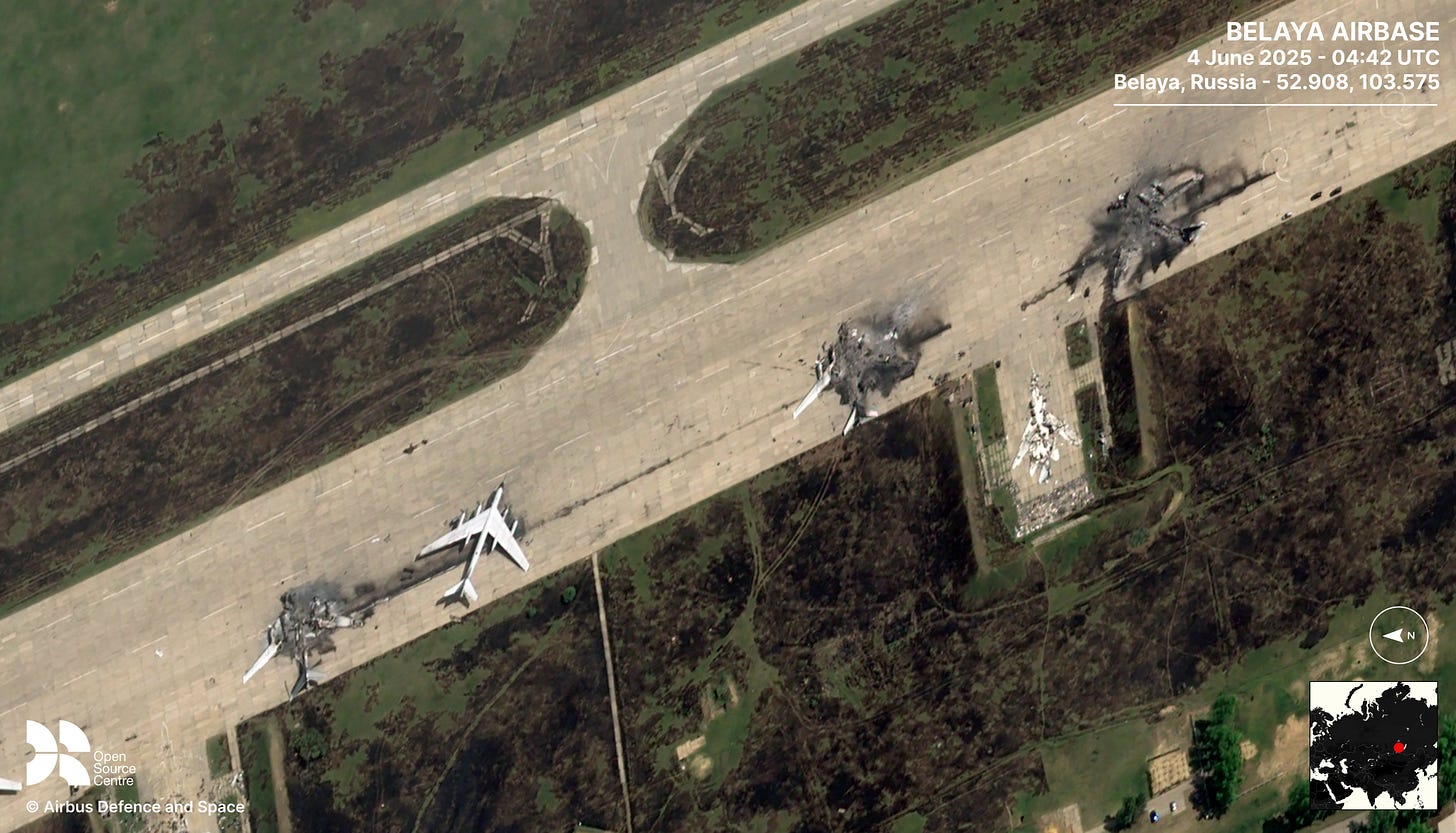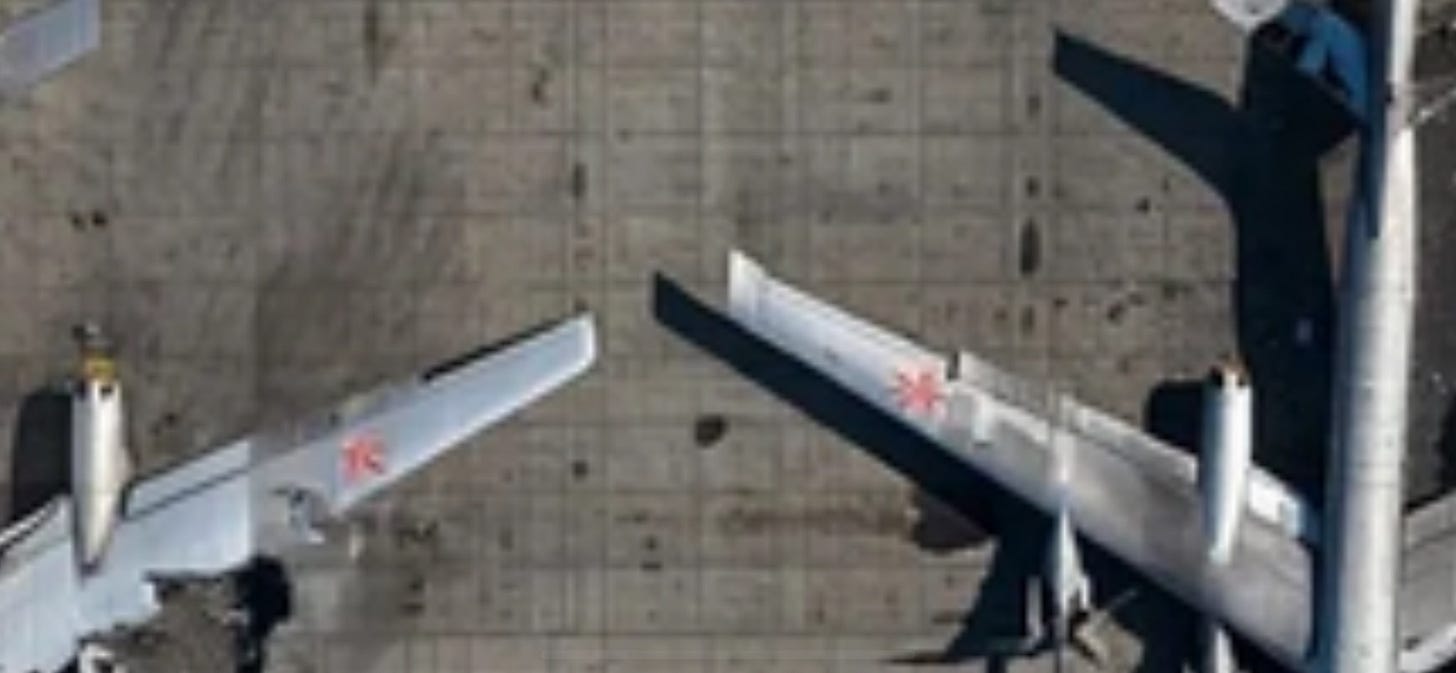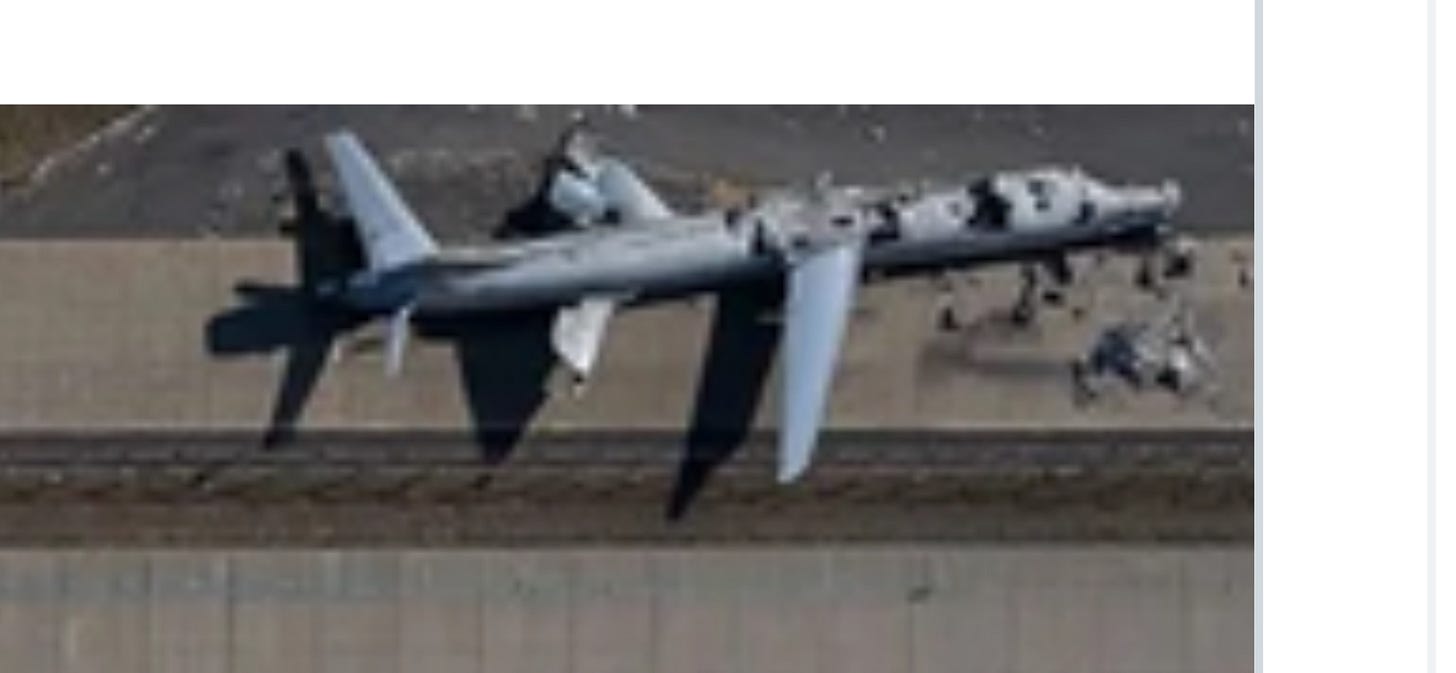Fooled by a Fake
A viral image claimed to show a Ukrainian drone strike’s impact on Russian bombers — but it didn’t hold up to scrutiny. What does this say about truth and deception in the age of open-source war?

On 1 June an operation by Ukraine’s Security Service (SBU), codenamed Spiderweb, damaged or destroyed part of Moscow’s strategic bomber fleet in a daring surprise attack.
Ukrainian President Zelenskyy said 117 drones were used in the operation, during which four military airfields were targeted.
The SBU claims that 40 Russian warplanes were severely damaged or destroyed, with costs estimated at around $7 billion. This would equate to approximately 20% of Russia’s long-range bomber fleet.
Independent estimates paint a more cautious picture, and open-source researchers suggest the number may be closer to between 10 and 12.
The drones used in the attack were transported by truck close to the airfields. The farthest, the Belaya air base in the Siberian region of Irkutsk, lies 4,000 kilometres from Ukraine.
Footage of the attacks and their aftermath has been made publicly available through open-source satellite imagery, and video from the drones themselves. As is increasingly the norm in modern conflict, this provides us with a first-hand glimpse into the war's realities.
However, this transparency comes with its own issues. Among the imagery circulated online is a satellite image of dubious provenance, purporting to show a row of destroyed Russian bombers lying on the tarmac at an unnamed airfield.
The picture (which illustrates this article) has rightly been flagged as a fake — and several details give it away.
One key indicator is the aircraft's propellers. The planes appear to resemble Tu-95 bombers, but the propellers stick out and point upwards in a way that would not be visible from the satellite angle shown.
Compare this with a genuine satellite capture from Airbus Defence on 4 June over the Belaya air base, which shows a clearer and verifiable image of destroyed Tu-95 and Tu-22 aircraft.
Other elements also raise suspicion. There are large, dark blobs next to the second and third planes on the runway. It's unclear what these are meant to be — they can’t be shadows and are too neatly shaped to represent fuel leaks or scorch marks.
Finally, a destroyed “plane” in the top right corner of the image also appears off. According to the SBU, the aircraft damaged in the attack included the A-50, Tu-95, and Tu-22M. This plane resembles none of them, or any aircraft in existence for that matter.
This is far from the first time fake digital images of war have spread online. On several occasions, screenshots from the video game Arma 3 have been mistaken for real footage, used in news reports or propaganda posts.
In 2018, BBC News reported that Russia’s Channel One had used Arma 3 footage — a military combat simulator — in a broadcast on the Syrian conflict. In 2023, Bohemia Interactive, the game's developer, published a guide to identifying fake images created using its software following a surge in misleading posts during Israel’s invasion of Gaza.
One TikTok video, identified by BBC Verify journalist Shayan Sardarizadeh, was viewed 3.5 million times.
The use of fake imagery undermines serious attempts to document real military operations and war crimes. It fuels internet scepticism about real-world events, making the work of journalists and researchers even harder.
According to President Zelenskyy, “since the beginning of this year, the Russian army has carried out attacks against Ukraine using nearly 27,700 aerial bombs, almost 11,200 Shahed drones, around 9,000 other types of attack UAVs, and more than 700 missiles, including ballistic ones.”
A new Human Rights Watch report stated that between 1 May and 16 December 2024, Russian drone attacks in Kherson killed at least 30 civilians and injured another 483, according to the Kherson City Council Executive Committee. Many such verified attacks have been dismissed online as “fake news.”
Eventually, this conflict will end, and the long process of building a complete historical record will begin. There are already thousands of high-quality, verifiable images that researchers and war crimes prosecutors will be able to use.
The creation of fakes — whether to bolster Ukraine’s achievements or otherwise — only muddies the waters of truth. In an increasingly divided world, discerning what is real and what is not has never been more important.






